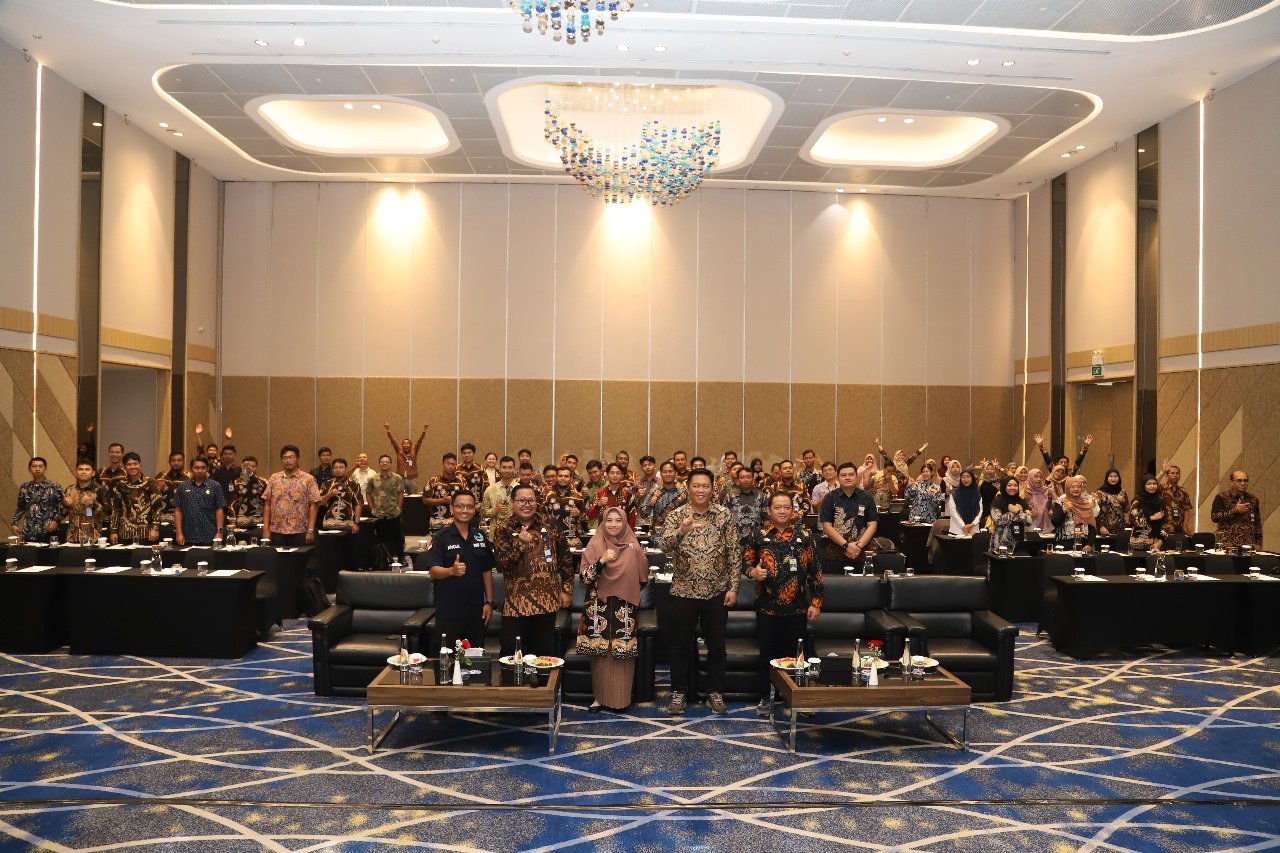Discussion on Progress of e-SAKIP Reporting Application, Performance Achievements of Work Units, and Quarterly Monitoring Report Concept for Q1 2024

Bogor, March 27-28, 2024 – The Secretariat of the Directorate General of Railways (through the Planning Division) held a meeting on the progress of filling in the e-SAKIP (Sistem Akuntabilitas Kinerja Instansi Pemerintah) reporting application, as well as discussing the performance achievements of work units and the concept for the Quarterly Monitoring Report for Q1 2024. The meeting was held in Bogor over two days, both offline on 27-28 March 2024 and online via Zoom Meetings.
It was attended by representatives from various Echelon II and Echelon III working units within the Directorate General of Railways, as well as a representative from the Deputy for Policy Implementation Coordination and Evaluation, Ministry of State Apparatus Utilisation and Bureaucratic Reform (Kemen PANRB), who acted as a resource person. During the meeting, the Kemen PANRB spokesperson shared important points regarding updates to the e-SAKIP review application. One of the main reasons for this update is the adjustment of the evaluation policy of the Government Agency Performance Accountability System (SAKIP), as outlined in Ministerial Order (PM) No. 88 of 2021. These changes are intended to facilitate the input of Evaluation Worksheet Sheets (Lembar Kerja Evaluasi/ LHE), particularly in the areas of compliance, and to make the evaluation process easier for evaluators and evaluated parties.
In this updated application, the central account has added new menus, bringing the total to 18, including the Budget Implementation List (DPA), Performance Tree and Cascading, Internal LHE AKIP Report, Monitoring and Evaluation (Monev) Action Plan Report, and various other technical guidelines. The work unit accounts now have 11 menus, including DPA, Performance Tree and Cascading, and Internal LHE AKIP. This update highlights the importance of adapting and updating the evaluation and accountability system to support better performance of government agencies. It also emphasises the need to synchronise data and reports to ensure the more effective and efficient performance evaluation.
During the discussion, several technical aspects of using the e-SAKIP Review application were raised. Participants were informed that old documents would not be displayed directly in the application, but would still be stored on the Kemen PANRB server. Participants were also instructed to upload relevant documents for 2024, as previous files would still be stored on the server. The discussion covered the technicalities of uploading documents, where the uploaded files can be in PDF format or as links to supporting data if the file size is too large. The maximum file size is 5-10 MB and if the file exceeds this size, participants are encouraged to compress the file or provide a link. For supporting data for the TL LHE AKIP menu, matrices or PowerPoint presentations can be uploaded as supporting data. Some menus, such as the Monev Action Plan Report and the Performance Report, have specific document requirements for uploads.
In addition, there were guidelines for each work unit on the technical documents to be uploaded according to the applicable regulations, such as the Ministerial Regulation No. 117 of 2020 and the SE-ITJEN on the implementation of the SAKIP evaluation. Other menus are optional, where users can upload additional documents relevant to the implementation of SAKIP. After the resource person's presentation, each working unit of the General Directorate of Railways discussed its performance results for the first quarter of 2024.
Key Conclusions from the Discussion:
-
All work units are expected to upload SAKIP documents on the e-SAKIP Review application according to the categories provided in the updated application. This step is crucial to ensure that all current data and information are accessible in a structured and organized manner.
-
Work units must follow up on the 2023 SAKIP evaluation recommendations by sending a letter to the Director General of Railways. This ensures the proper implementation of the recommendations and supports overall performance improvement.
-
Data synchronization is emphasized, especially regarding aspects such as the percentage of TQI (Total Quality Indicator), reliable operational facilities, and rail transport. This is important to ensure the accuracy and consistency of the reported data.
-
Work units are also instructed to align the actual data for Non-Tax State Revenue (PNBP) with the finance division to maintain transparency and accountability in budget management. (TA).
Stay updated on the latest news from the Directorate General of Railways by visiting our website at djka.kemenhub.go.id!
Follow our social media accounts:
Instagram: @ditjenperkeretaapian
Twitter: @perkeretaapian
YouTube: Ditjen Perkeretaapian











Komentar
LOGIN FOR COMMENT Sign in with Google